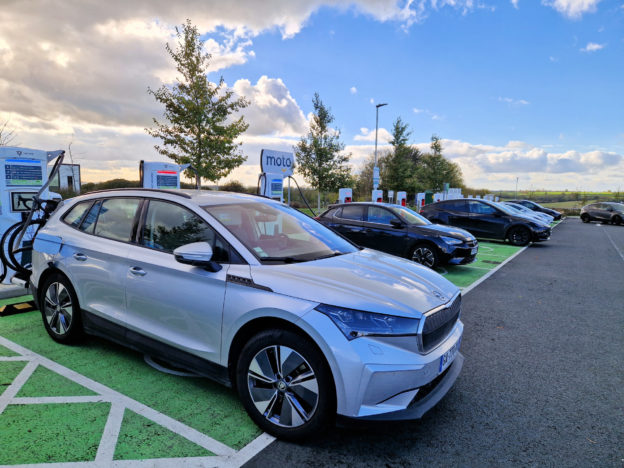Tesla drivers probably don’t need to read on. They have had a good charging infrastructure for years now, so driving to and from the Alps is no issue at all.
Travel to and from the Alps has changed somewhat since COVID. Now people are looking for “greener”, cheaper and perhaps healthier ways to travel. I’ve had a small EV for 6 years. It was a great second car and worked well for us where we live in the French Alps. I’ve been surprised at how quickly electric cars have developed in that time and recently upgraded to a much bigger EV. Now our electric car is the main car in the household. We don’t drive to and from the UK very often. The last time was well over 10 years ago. However we recently could not avoid it so I thought I’d write about how it went.
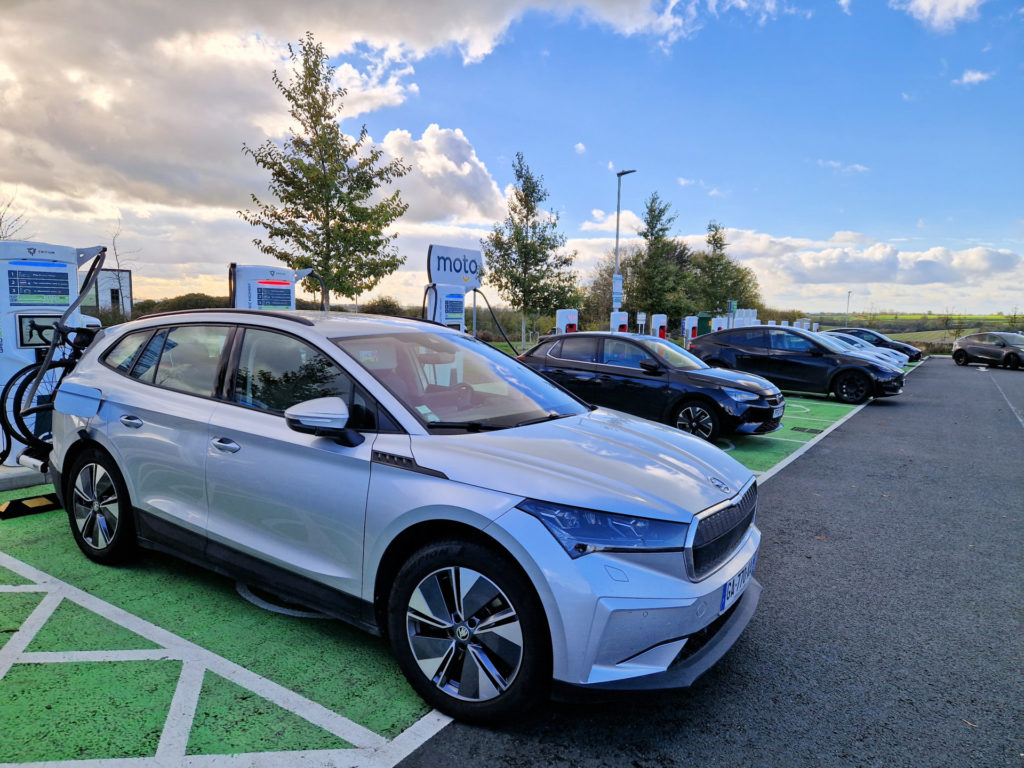
Before I go on. I’d like to acknowledge the fact that no travel is “green”, there are only more or less eco ways to go. So in order of preference:
- Don’t go!
- Take a bike or walk
- Travel by Train or Bus
- Drive an EV
- Then a fossil fuel burning car
- A long way down the list is to fly
In brief
We made 6 stops on the way to Middlesbrough from the Alps. 9 on the way back. We never had any major issues, the only minor issues we had were in the UK. On average the charging stops lasted 20 minutes. Overall our charging experience was better in France. We spoke to a British person charging their EV at one of the motorway fast chargers and he raised this before we did, he said his experience charging in France was better than the UK. As an aside, we were less tired than in the past, stopping every 1.5 to 2 hrs really helps from that point of view.
Was it cheaper than driving an ICE vehicle?
ICE (Internal Combustion Engine). And the answer is “no”. In general owning an EV is cheaper than owning an ICE. 95% of the time I charge at home and this is 20% of the cost of using diesel. In addition, my car only needs a cheap service every 2 years. These savings quickly add up. However, when making a long journey you will use fast chargers on the motorways and they are priced the same as conventional fuels, and sometimes more! You will save money by taking the “eco” routes, or by driving slower but these options are open to you whatever vehicle you drive.
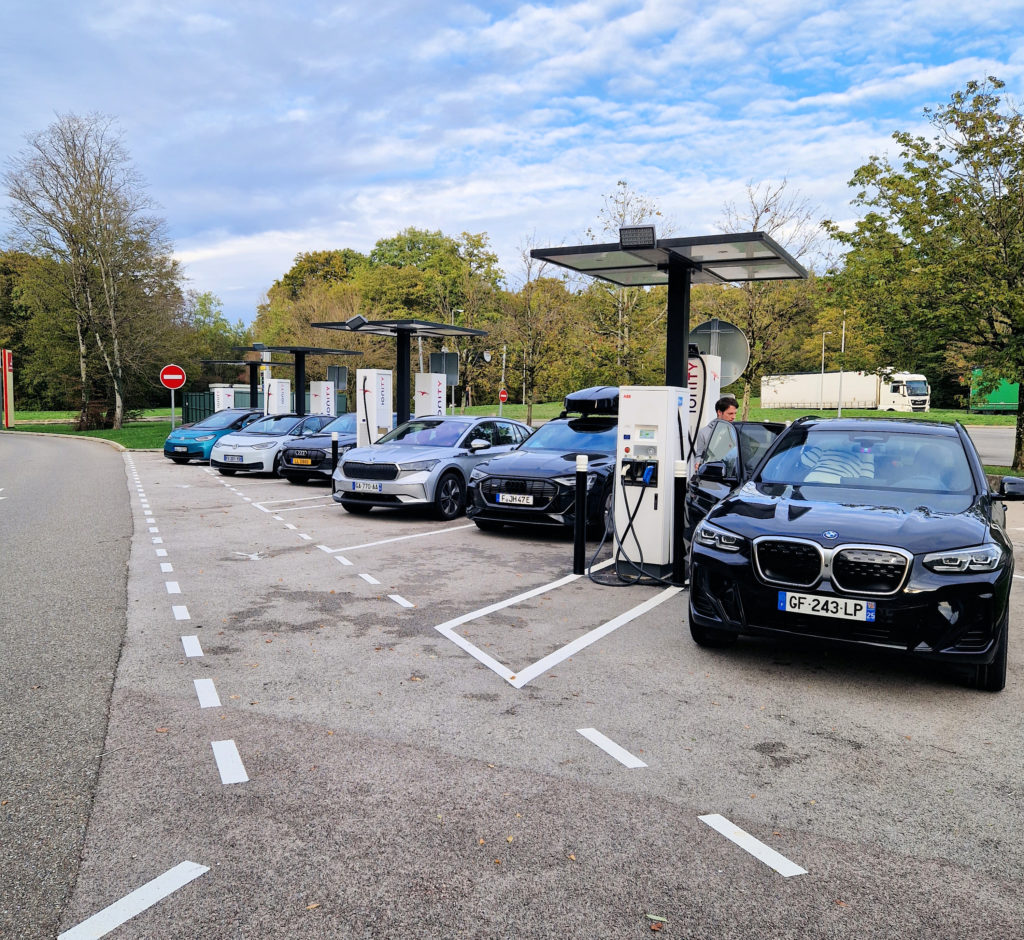
The full story
We needed to transport a couple of bikes back from the UK and some personal possessions so driving was really the only viable option. My car is now a Skoda Enyaq, it was the largest, cheapest EV available when I bought it last year. It is only a “standard range” model, so a 60kW battery, any more would be overkill for my day to day use, it does provide enough range for a very long journey, but if you are a frequent long distance driver you will find a long range model much more practical.
EV’s come with different sized batteries, the smaller they are, the cheaper and lighter the car is. If you want to try and make the minimum impact on the planet you should go for as small and light as is practical.
- 40 kW or less is great for local journeys of less than 200km, for most people this would cover 90% of their driving
- 50-60-70 kW should do everything, but long journey’s will require quite a few stops.
- 80+kW is considered “long range” but can be very heavy and expensive.
We made our journey in November 2022, driving from the Alps to Middlesbrough (eventually Newcastle) and back again. We used the tunnel to cross the channel. The total distance we travelled was 3500 km. You might consider using a longer ferry crossing for that trip. Hull to Rotterdam is an option. I’m not sure how “eco” ferries are though.
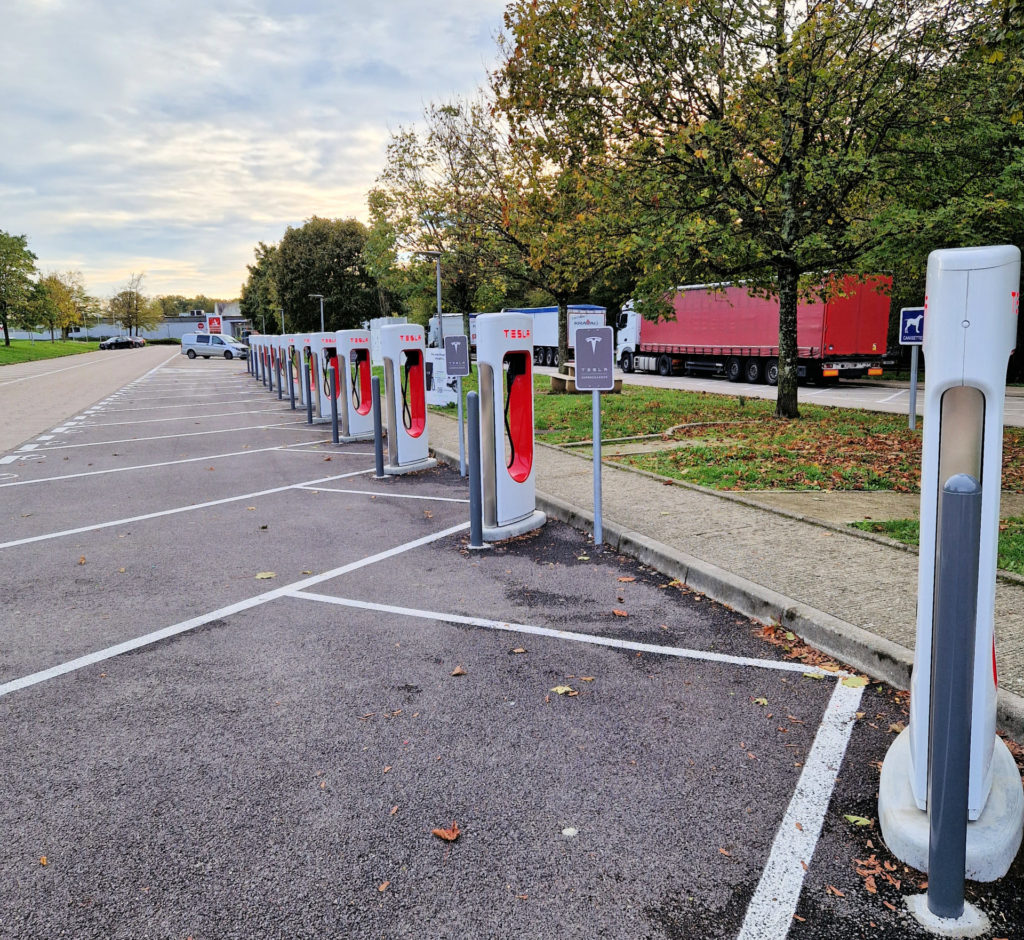
As far as planning went we didn’t spend too much time on it. We used an app called “A Better Routeplanner” https://abetterrouteplanner.com/, which did most of what we needed from a planning point of view. It selects the places to charge automatically. It’s not the most stable app and is not as good as Google at dealing with road closures (we did get caught out by this), but if you use it alongside Google Maps for the navigation it is fine.
We decided to split the journey around Lille. It would make sense to find somewhere to stay that offers charging on site. That would save one charge. But as I said, we didn’t spend long on planning so didn’t have that option. We also had winter tires on the car which won’t have helped the efficiency.
Alps to the UK
1400 km and 6 stops altogether. We only stopped twice between Morzine and Lille. The weather was warm for this leg. 15-20C. 2 stops is quite hard to do and you’d need perfect conditions. We only had 2 in the car, no bikes, we didn’t need any air-conditioning and we drove quite slowly (110km/h). We cut the corner to cross the Jura too. The motorway route via Bourg en Bresse is an hour faster but will mean another charge stop and will cost more on the autoroute (22 €). Don’t discount this shortcut. The route is beautiful and there is a great spot to stop for cheese at the “Fruitière du Pays Grandvallier” close to Morbier.
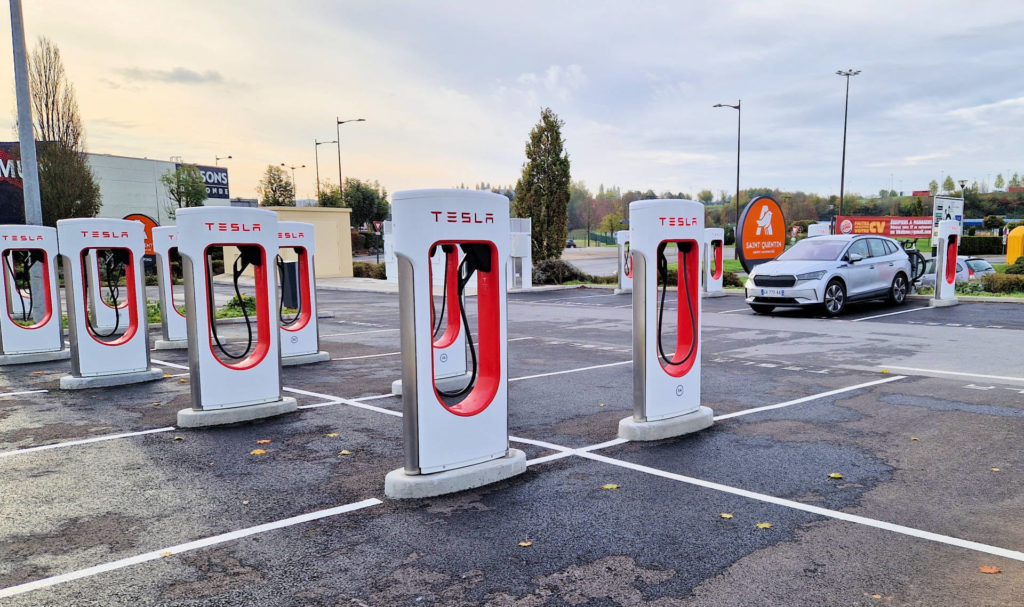
We used a fast charger at a Lidl in Lille the next morning and then again at the check-in for the tunnel. In the UK we had to make two more stops before we got to our destination near Middlesbrough. In all, the mpg came out at about 17Wh/100km (3.6 mi/kWh) and the charging added a couple of hours to the journey.
Charging at our destination was done at a fast charger at McDonalds 5 min from where we were staying. We made various excursions in the area. Always using fast chargers.
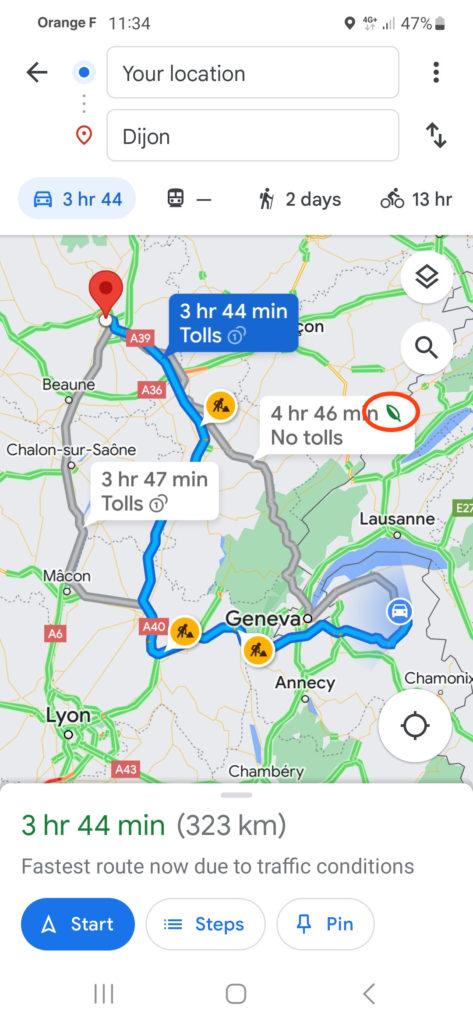
UK back to the Alps
For the journey back the weather had cooled significantly. So we started out with a frost and maximum temperatures hovered around 10C. This makes a big difference to the energy consumption, because not only do you need to heat the cabin but for optimal performance the car will heat the battery too. We had more luggage and a couple of bikes on a tow bar rack (I had not realised before this trip, but at motorway speeds this reduces range by 10 to 15%). We also drove a bit quicker. More like 120km/h and up to 130 km/h (81mph), 120 km/h is the optimal speed in most EV’s when you take into account the charging times. It’s not the optimal speed for saving money, that’s probably about 30 km/h! So, if you really want to cut down on charging stops then drive with the lorries at 90 km/h. It’s pretty boring though!

The efficiency on the way home was 30% worse at 24 kWh/100km (2.6 mi/kWh). We stopped 9 times. We had to drop our 2 girls at Luton airport on the way, and of course Murphy’s law dictated that the biggest issue we were to have on the entire trip was the charge station just before Luton airport at the services in Rugby. It was a typical issue that thankfully is getting less frequent. The charging machines didn’t recognise any of my 3 membership cards or either of my two debit cards. After 15 minutes and 3 different machines I finally managed to make it work with a credit card. It was a busy spot with 10 charging points and about half the people there were having similar issues. It was stressful and not acceptable. I’ve experienced it many times in the last 7 years but am thankful that it now seems to be getting rarer.
We had another issue at a McDonalds on the side of the M25, we plugged in and went for a coffee, when we got back we discovered the charge had given up after a minute. So we had to wait another 20 min to get the charge we needed. It was a newbie mistake. Always check the car is charging on your app when drinking coffee. I was too relaxed and had left my phone in the car!
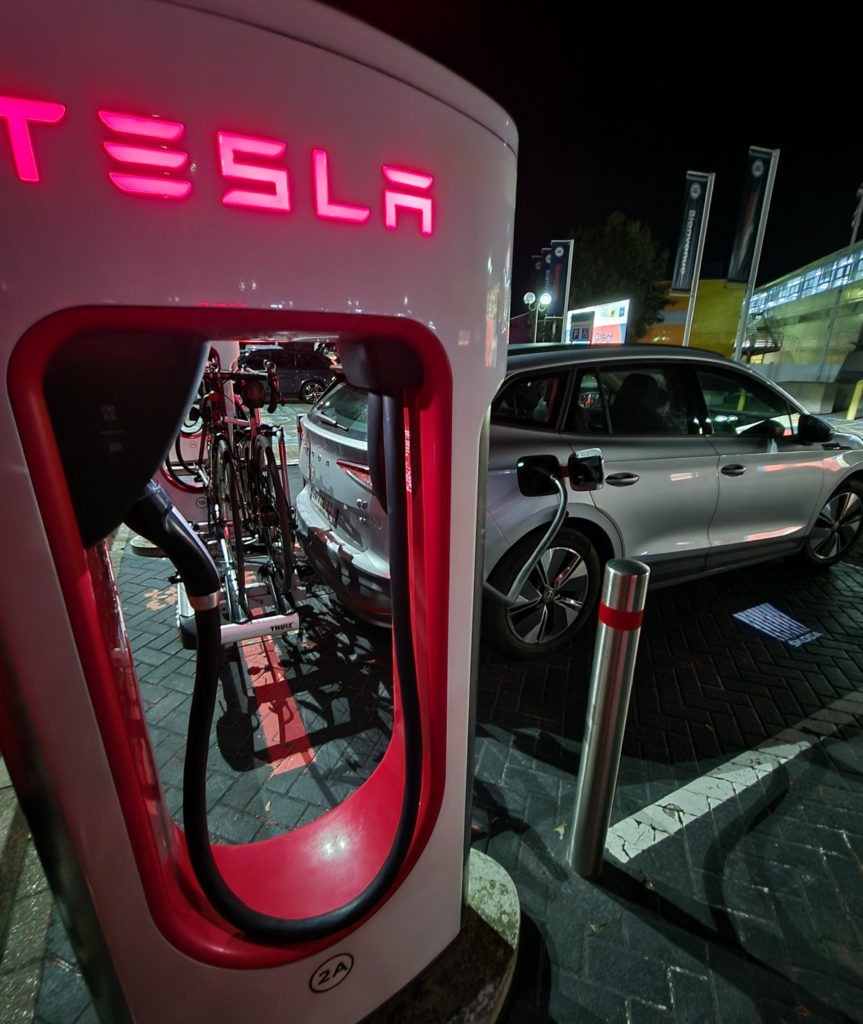
Charging your EV in the ski resort
If you are making the journey from the UK to the Alps, you’ll want to know what the charging is like when you arrive. Many of the chalets and hotels have started to fit charge points in the last few years, that will be your first port of call. Beyond that, almost every French town in the Haute Savoie has at least 2 reliable and fairly cheap 22 kW charge points (so not fast chargers). Beyond that many more are being added as I write this. The local paper recently mentioned 20 new points in Chamonix.
Personally I carry the following cards
- Eborn – This is the “local” one in the French Alps – in fact it covers the whole Rhone Alps. Travellers to the region probably don’t need this, the following cards should cover it.
- ChargeMap – I think this is the most popular in France, their interactive map has lots of good information and comments about individual chargers.
- PowerPass – This came with the car, it’s connected to Ionity which is the biggest fast charge network in France.
- Plugshare – This is one of the biggest pan european cards.
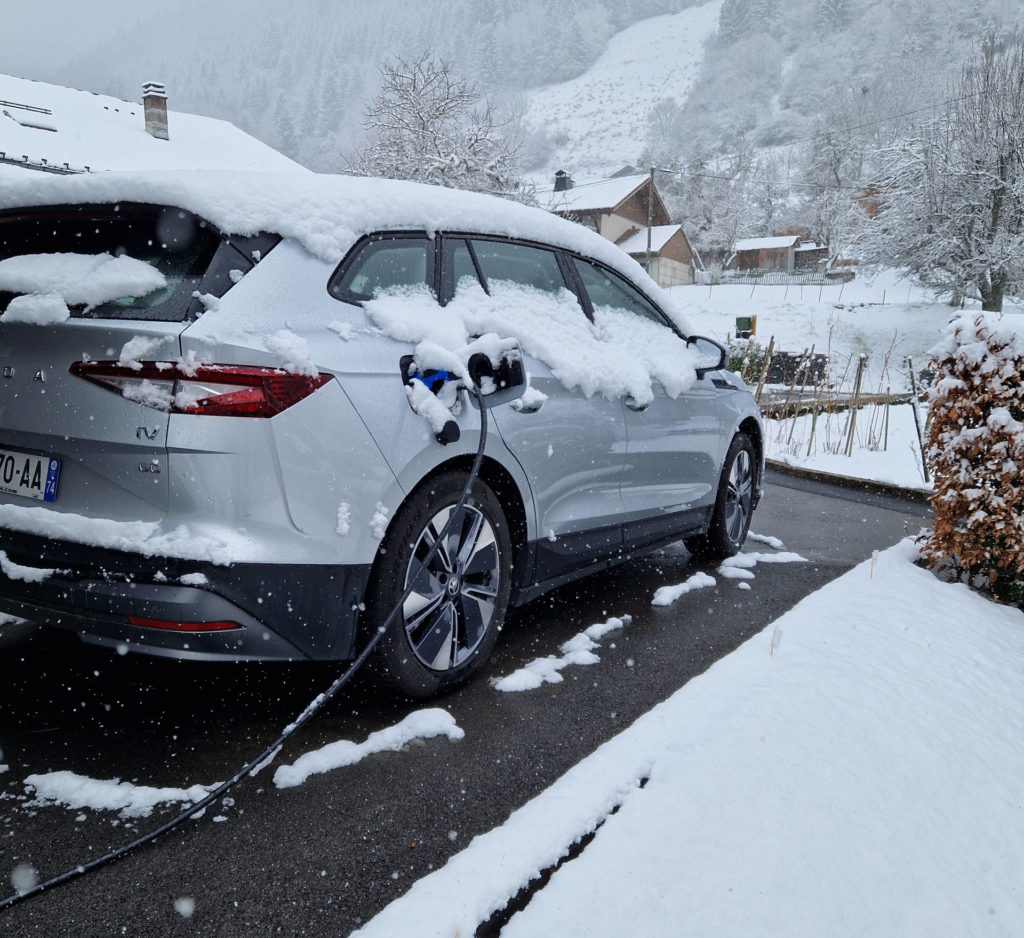
My other EV blogs
Electric vehicles and solar panels; they aren’t really that green anyway?

